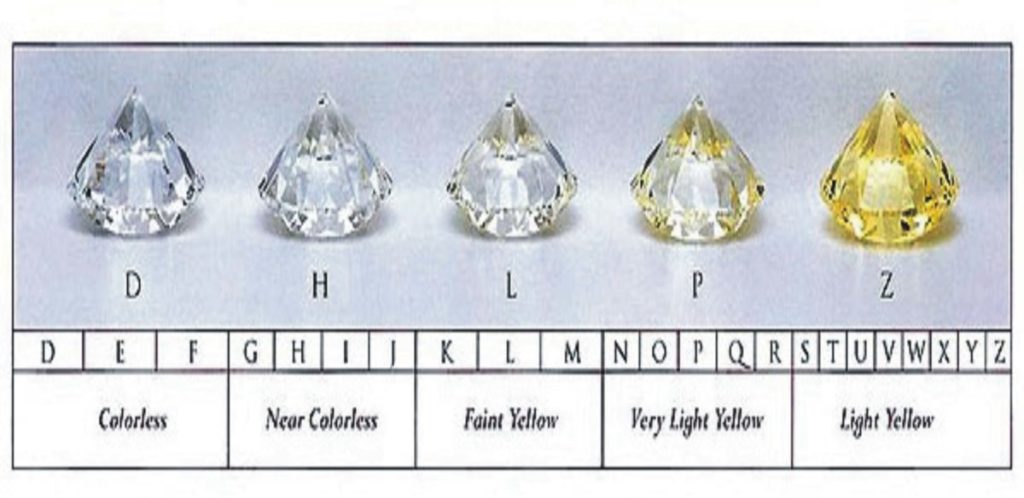If you are in the market to buy a diamond for you or a loved one, it is important that you learn the jargon and the traits that make a diamond valuable. There are many diamonds out there and many kinds of dealers. Below you will find elements to determine the right diamond for you and your budget.
First select your diamond shape
Diamonds come in a variety of shapes. These shapes are very different with unique characteristics. The following are the normal shape classifications for diamonds:

The Four C’s of Diamonds
The Color
Oddly enough, the color refers to the diamond’s lack of color so it grades on the whiteness of a diamond. A grade of D is the highest possible grade while Z is the lowest. Color manifests in diamonds in shades of pale yellow. This is why diamonds are graded on its lack of color. The less yellow the diamond has, the higher its color grade and its price. After the Cut scale, Color is generally considered the second most important characteristic when selecting a diamond.
Diamond Color Scale

| Rating | Description |
|---|---|
| Z-N | Noticeable color |
| M-K | Noticeable color |
| J-I | Near-colorless. An exceptional value with slightly detectable warmth or tone. |
| H-G | Near-colorless. Color difficult to detect unless compared side-by-side against diamonds of better grades. An excellent value. |
| F-E | Colorless. Minute traces of color can be detected by an expert gemologist. A rare diamond. |
| D | Absolutely colorless. The highest color grade. Extremely rare. |
What Carat Weight Is Right For Me?
To choose the best carat weight of diamond, consider the size of her finger, the size of your setting, and your budget.
If a large carat weight is important to you, yet you’re working within a strict budget, consider a diamond with a good cut, SI1-SI2 clarity, and an I or J color grade.
Diamond prices jump at the full- and half-carat weights. Diamonds just below these weights cost significantly less, and, because carat weight is distributed across the entirety of the diamond, small size differences are almost impossible to detect.
Keep in mind that the smaller the finger, the larger the diamond will appear. A 1.5-carat diamond solitaire looks much larger on a size 4 finger than a size 8.
Not all settings will fit all diamond carats or shapes. If you have already selected a setting, check the diamond specifications of your ring. If you need a special jewelry piece created, Houston Diamonds can accommodate almost any request.
How To Buy A Diamond (or Engagement Ring) Wisely
1. Choose a Trusted Jeweler
Your chosen jeweler should be an expert in diamonds able to answer your questions about diamonds in clear, simple language. An educated jeweler will not only explain the Four C’s of Diamond quality to you, he or she will be able to guide you to the perfect diamond that fits your lifestyle and budget.
Make sure you review our section on Diamond Education prior to shopping.
2. Get A Diamond Grading Report
If you are purchasing a high priced diamond, you should get a diamond grading report from an unbiased, scientific source such as GIA. It’s indisputable verification of its quality since a lab can see subtle differences that even a trained jeweler cannot. Most large diamonds will come with some sort of grading report.
3. Consider Getting Your Diamond Insured
Having your diamond purchase appraised and insured will guarantee that your diamond purchase is protected. Insurers will want an accurate grading report to evaluate the value of the diamond. You should also consider getting your diamond laser-inscribed with its report number to provide verification if it is ever lost or stolen.
We have compiled a list of questions we often receive. If you have any other questions, please feel free to contact us.
Source: http://houstondiamonds.com/home/diamond-education/

